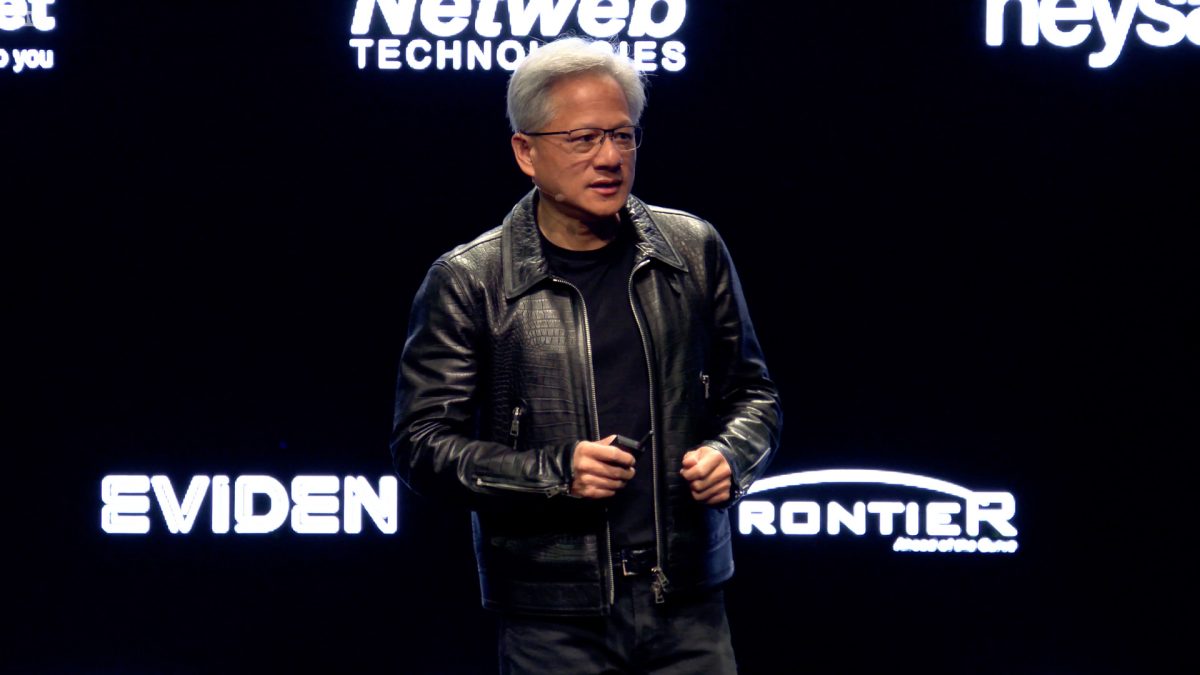India’s Moment in AI: Jensen Huang’s Vision for the Future
In a recent gathering with Indian Prime Minister Narendra Modi, NVIDIA CEO Jensen Huang heralded a pivotal moment for India in the AI landscape, stating, “It’s India’s time.” This proclamation reflects the rapid evolution of India into a key player in the realm of artificial intelligence, particularly as it navigates the complexities of large language models (LLMs) amidst its rich tapestry of linguistic diversity.
) An engaging moment at the NVIDIA Summit sheds light on India’s AI aspirations.
An engaging moment at the NVIDIA Summit sheds light on India’s AI aspirations.
Huang’s insights at the NVIDIA Summit 2024 in Mumbai echoed a broader narrative about India’s potential. Major sectors such as agriculture, education, and manufacturing are increasingly embracing AI technologies to elevate productivity levels. This strategic shift is essential for the burgeoning digital landscape in India.
Partnerships with heavyweights like Reliance Industries and Infosys are pivotal to these advancements. NVIDIA’s collaborative efforts aim to establish cutting-edge AI data centers, a crucial step towards the practical implementation of AI innovations tailored for Indian contexts. Specifically, Reliance is spearheading the development of JioBrain, a suite of AI tools designed for various applications. The intertwined relationship between these corporations and NVIDIA exemplifies the commitment to enhancing India’s technological capabilities.
As the Indian government allocates a significant budget of $1.2 billion through the IndiaAI Mission, aimed at fostering an AI-centric digital framework, there’s no doubt that the nation is setting the stage for a transformative era. Recognizing the importance of laying down robust infrastructure is just as vital as the technology itself.
Untangling Linguistic Complexities
One of the most fascinating yet challenging aspects of developing LLMs in India lies in its remarkable linguistic diversity. With over 25 official languages and numerous dialects, the task of creating language models that can effectively cater to multiple vernaculars is daunting. Huang points out that triumphing over these linguistic obstacles could provide insights applicable on a global scale. Imagine cracking the code for effectively addressing diverse languages through a single model—this could revolutionize the entire field.
“If India can overcome these challenges, it can unlock global potential,” Huang articulated, underscoring the unique position India holds on the world stage in AI development.
The diversification of languages presents not only hurdles but also a wealth of opportunities. Just as America has led in English-language AI developments, India could emerge as a leader in multilingual models. The integration of voices from across India can ensure that AI technologies are accessible, relevant, and beneficial to all.
A Broader Context for AI
The year 2024 marks a significant period for India’s growing focus on AI. As the infrastructure continues to amplify through initiatives like the IndiaAI Mission, the emphasis on holistic development across sectors cannot be overstated. Education and skill development in AI are crucial if India aims to complement its ambitious aspirations with a workforce capable of driving these initiatives forward.
The excitement surrounding AI is palpable among the youth, with educational institutions increasingly incorporating AI into their curricula. However, we must be cautious and ensure that the development of AI does not come at the cost of ethical standards. The responsibility lies with industry leaders, educators, and policymakers to guide this journey thoughtfully.
In my personal experience in tech journalism, I have witnessed the shift in narrative concerning AI within India’s landscape over the past few years. From being seen as a daunting challenge, AI is now perceived as an opportunity for upliftment and innovation. The enthusiasm is contagious, especially among startups that leverage AI to solve local problems, further enhancing the scope for economic growth.
Looking Ahead
India’s significance in the global AI landscape cannot be overlooked, and its ongoing journey may serve as a blueprint for other emerging markets. The convergence of effort between the government, corporations, and educational institutions sets a fertile ground for an AI renaissance. As Jensen Huang highlighted, “India can lead on the global stage if it capitalizes on its challenges and opportunities.”
For India, this is more than just a technological innovation—it represents a chance for leadership, inclusivity, and the promise of AI that resonates with its diverse populace. Embracing this journey is vital, and as we stand at this juncture, I cannot help but feel optimistic about what the future holds. All of us should remain alert and engaged—not just for ourselves, but for the generations to come.
Future visions sculpted by AI in India.
In conclusion, the optimism expressed by leaders like Jensen Huang at events such as the NVIDIA Summit is justified. As we enter this promising phase for AI in India, we must continue to foster collaboration, innovation, and inclusivity to ensure that the benefits of AI are felt widely and equitably throughout society. There is much work to be done, but the horizon is bright, beckoning us all to be part of this extraordinary journey into the future of AI.















